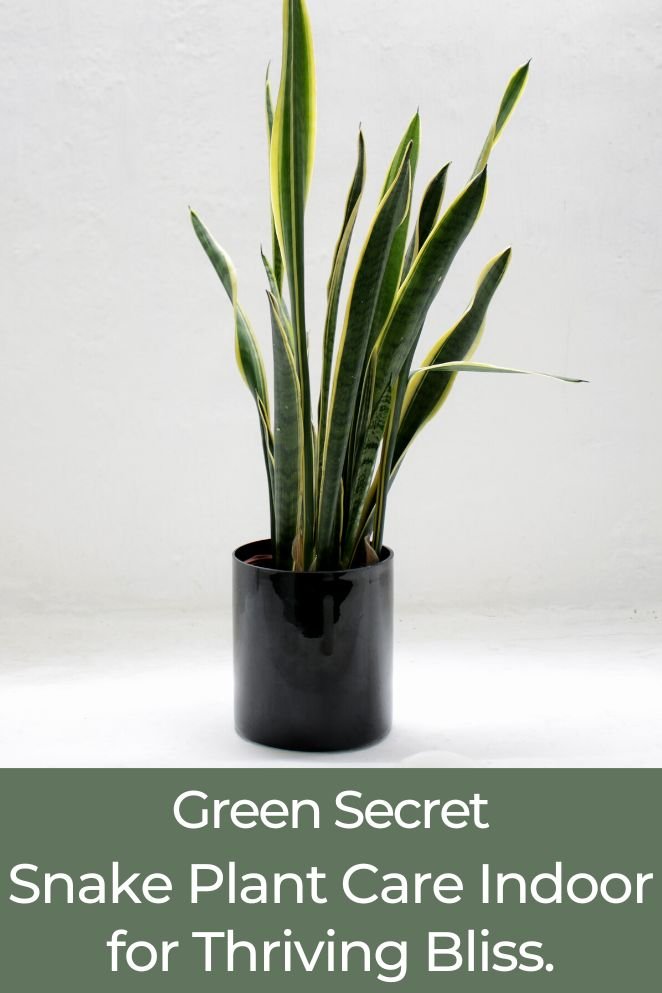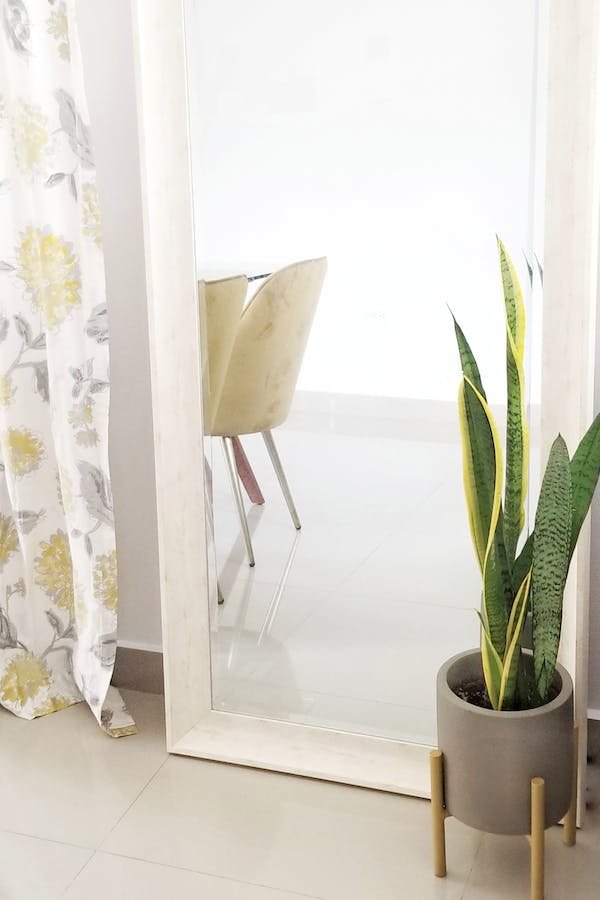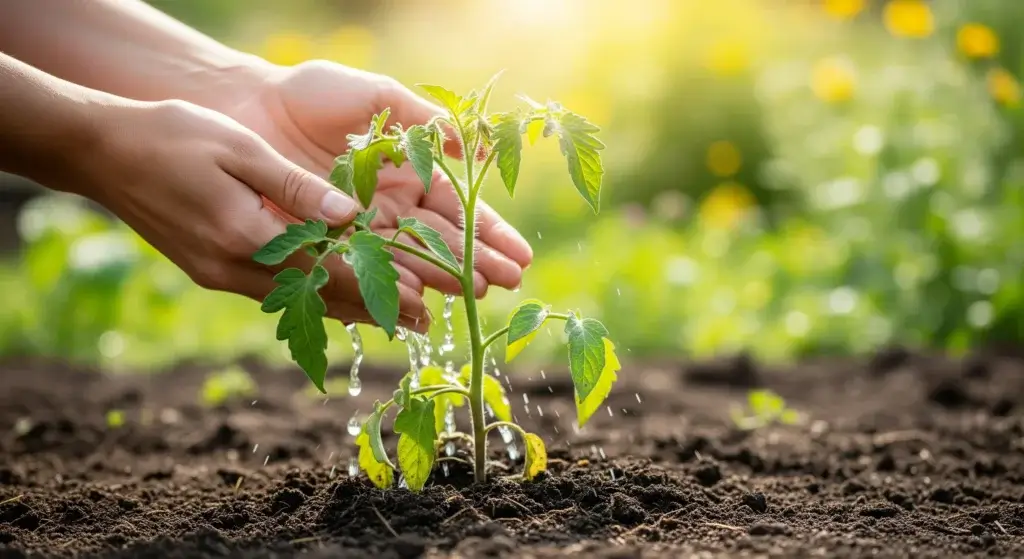
Snake plants recognized scientifically as Sansevierias, have become renowned as the perfect indoor companions.
Their captivating look and simplicity in maintenance have propelled them to be a beloved choice among plant lovers.
This comprehensive guide aims to delve into all the essential knowledge required to ensure your snake plant flourishes within indoor settings.
Benefits of Snake Plants in Your Home
Air-purifying power
Snake plants are exceptional at purifying indoor air.
Their unique ability to filter toxins like formaldehyde, benzene, trichloroethylene, and xylene makes them invaluable additions to any space.
These harmful compounds, commonly found in household items like paints, cleaners, and furniture, are effectively absorbed by snake plants, contributing to a cleaner and healthier indoor environment.
Oxygen release at night
Unlike most plants that absorb oxygen and release carbon dioxide during the night through the process of photosynthesis, snake plants do the opposite.
They conduct a type of photosynthesis called Crassulacean Acid Metabolism (CAM), where they take in carbon dioxide and release oxygen, even after sunset.
Low maintenance, high impact
Apart from their air-purifying prowess, snake plants are incredibly low-maintenance.
They thrive in various light conditions, tolerate irregular watering, and are resilient against pests and diseases.
Their hardiness makes them perfect for busy individuals or those new to plant care, providing a touch of greenery without demanding constant attention.
Aesthetic appeal
With their striking, sword-shaped leaves that come in various shades and patterns, snake plants add a decorative touch to any space.
Their architectural form and versatility in different interior styles, from modern to bohemian, make them a favored choice among interior decorators.
Emotional well-being
Beyond their physical benefits, having indoor plants like snake plants can positively impact mental health.
Caring for plants can reduce stress, boost mood, and create a sense of tranquility and well-being in your home environment.
Adaptation to container living
Their relatively slow growth and ability to flourish in confined spaces make snake plants suitable for container living.
They can adapt well to various pot sizes and types of soil, provided the soil is well-draining to prevent waterlogging.

Characteristics of Snake Plants
Sword-like leaves
Their most distinctive characteristic is their upright, sword-like leaves that can grow up to 8 feet tall indoors.
These leaves are thick, fleshy, and have a pointed tip.
Striped pattern
The leaves of snake plants are typically dark green with lighter green or yellow stripes.
The pattern of these stripes can vary depending on the variety of snake plants.
Rhizome
Snake plants have a thick, underground rhizome that stores water and nutrients.
This rhizome also helps the plant to spread and grow new shoots.
Rosette growth
Snake plants typically grow in rosettes, which are clusters of leaves that grow from a single point.
The size and shape of the rosette can vary depending on the variety of snake plant.
Drought tolerance
Snake plants are very drought-tolerant and can survive for long periods without water.
This makes them a good choice for people who are forgetful waterers or who live in hot, dry climates.
Low light tolerance
Snake plants can tolerate low light conditions and can even survive in rooms with no natural light.
This makes them a good choice for people who live in apartments or who have rooms with little natural light.

Ideal Indoor Conditions for Snake Plants
Light requirements
Snake plants thrive in indirect sunlight, making them perfect for spaces with filtered or partially shaded light.
However, they’re adaptable and can withstand low-light conditions, making them suitable for offices, bathrooms, or rooms with limited natural light.
Placing them near windows but not in direct sun exposure prevents potential leaf burn.
Temperature preference
Maintaining a moderate temperature range is beneficial for snake plants.
They prefer temperatures between 60°F to 85°F (15°C to 29°C), which aligns well with typical indoor environments.
Avoid exposing them to drastic temperature fluctuations or drafts, as these can stress the plant and affect its growth.
Humidity consideration
Snake plants are low-maintenance in terms of humidity requirements.
They don’t demand high humidity levels and can thrive in typical indoor humidity.
However, they can suffer in extremely dry conditions, so maintaining a moderate humidity level by occasionally misting the leaves can be beneficial, especially in dry climates or during winter months when indoor air tends to be drier.
Soil and potting mix
Using a well-draining potting mix is crucial for snake plants.
They prefer soil that allows excess water to drain freely, preventing waterlogging that can lead to root rot.
A mix of potting soil with perlite or coarse sand promotes adequate drainage.
Additionally, choosing pots with drainage holes facilitates proper water management.

Snake Plants Watering Techniques
Minimal water requirements
Snake plants have a unique ability to store water in their leaves, making them resilient to periods of drought.
Their tolerance for low water intake means they can thrive on minimal watering.
Allow soil to dry
The key to successful watering for snake plants is allowing the soil to dry out between waterings.
Before watering, check the soil’s moisture level by inserting a finger or a moisture meter into the soil.
Water only when the top inch or two of soil is completely dry, indicating that the plant needs hydration.
Watering frequency
Rather than adhering to a strict schedule, observe the plant’s needs based on environmental factors.
Typically, snake plants require watering every 2-6 weeks, depending on various conditions such as humidity, temperature, and light levels.
Lower humidity or brighter light might necessitate more frequent watering, while higher humidity or lower light may prolong the intervals between waterings.
Avoid overwatering
Overwatering is the most common mistake with snake plants and can lead to root rot.
Ensure that the pot has adequate drainage holes and never allow the plant to sit in standing water.
If unsure about the soil’s moisture level, it’s safer to delay watering than to risk overhydration.
Watering techniques
When watering, aim to moisten the soil thoroughly but avoid saturating it excessively.
Water the soil directly rather than pouring water onto the leaves, as excess moisture on the leaves can invite fungal issues.
Pour water slowly and evenly around the base of the plant until it starts to drain from the bottom of the pot.
Adjusting watering based on the season
During the plant’s active growth in spring and summer, it might require more frequent watering due to increased metabolic activity.
However, in fall and winter when growth slows down, reduce the frequency of watering to prevent waterlogged soil.
Techniques for Propagating Snake Plants

Leaf cuttings
Propagating snake plants through leaf cuttings is a straightforward and rewarding method.
Begin by selecting a healthy leaf from the parent plant, ensuring it’s free from any signs of damage or disease.
Using a clean, sharp knife or scissors, carefully cut the leaf into sections, each around 2-4 inches in length.
Place these leaf cuttings in a well-draining potting mix, ensuring they’re inserted upright and not deeply buried.
Keep the soil lightly moist and provide indirect sunlight.
Over time, these cuttings will develop roots and grow into new plants.
Division
Another effective way to propagate snake plants is by division, which involves separating the plant into smaller sections.
To do this, carefully remove the entire plant from its pot and examine the root system.
Gently divide the plant into smaller clusters, ensuring that each section has both healthy roots and foliage.
Repot these divided sections into separate containers with fresh, well-draining soil.
Water lightly and place them in a location with indirect light.
Division not only propagates the plant but also helps maintain its health by preventing overcrowding and promoting new growth.
Pests and Diseases Affecting Snake Plants
While snake plants are known for their resilience, they can encounter a few issues related to pests and diseases. Being vigilant can help maintain their robustness.
Pests
Spider mites
These tiny pests can infest snake plants, causing stippling and webbing on leaves.
Regularly wiping down leaves with a damp cloth and using neem oil can help control spider mites.
Mealybugs
These insects appear as white, cottony clusters on leaves or near leaf joints.
Use a cotton swab dipped in alcohol to remove them, or apply insecticidal soap to combat infestations.
Scale insects
These pests attach themselves to leaves and stems, sucking sap and causing yellow spots or wilting.
Remove them manually using a soft brush or cloth, and apply insecticidal soap or neem oil for severe infestations.
Diseases
Root rot
Overwatering or poorly draining soil can lead to root rot, causing mushy, discolored roots.
To prevent this, ensure proper drainage and avoid excessive watering.
Fungal leaf rot
This disease presents as brown, mushy spots on leaves.
Ensure good air circulation, avoid overwatering, and remove affected leaves promptly to prevent its spread.
Bacterial leaf spot
Characterized by dark, water-soaked spots on leaves, this disease can spread rapidly.
Remove infected leaves, ensure proper ventilation, and avoid overhead watering to prevent its occurrence.

Fertilizer Snake Plants
When it comes to fertilizing snake plants, less is often more.
These hardy plants don’t require frequent feeding.
If you choose to fertilize, a diluted, balanced houseplant fertilizer applied sparingly during the growing season (spring and summer) every few months can suffice.
Remember, it’s crucial to follow the instructions on the fertilizer label and avoid over-fertilizing, as too much can harm these resilient plants.
Conclusion
Caring for an indoor snake plant is a breeze when armed with the right knowledge.
These low-maintenance plants effortlessly bring greenery into any space while doing wonders in purifying the air.
Remember, even a small amount of care can go a long way in ensuring your snake plant stays healthy and thriving.
FAQs
Water sparingly, allowing the soil to dry out completely between waterings, usually every 2-6 weeks.
Yes, they can! Snake plants tolerate low-light environments but prefer indirect sunlight.
Overwatering leading to root rot and yellowing leaves are common problems. Ensure well-draining soil and don’t overwater.



